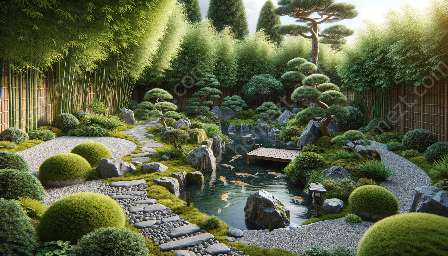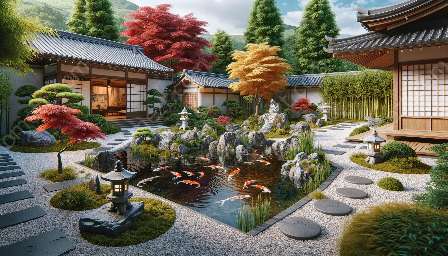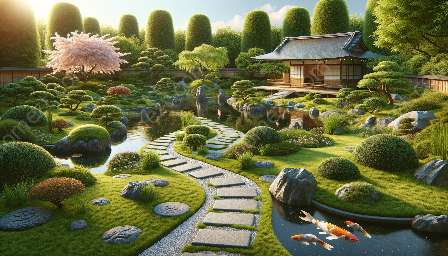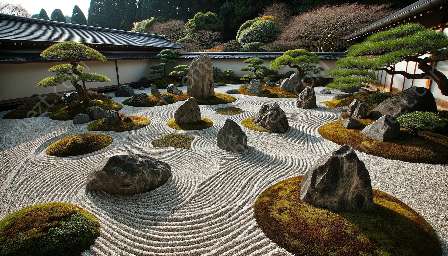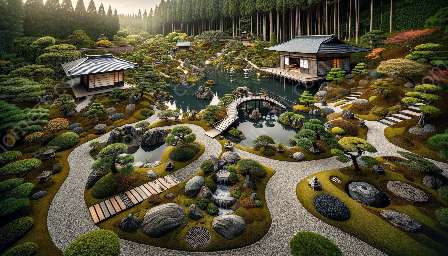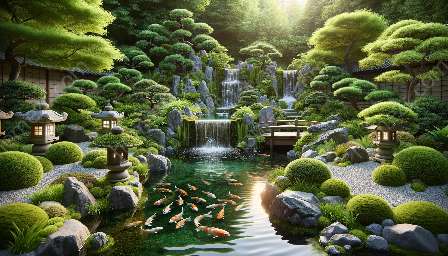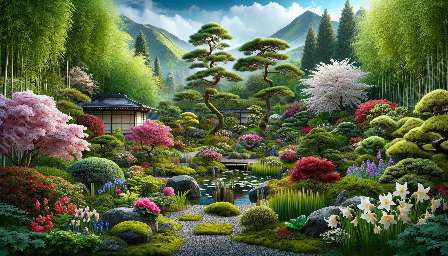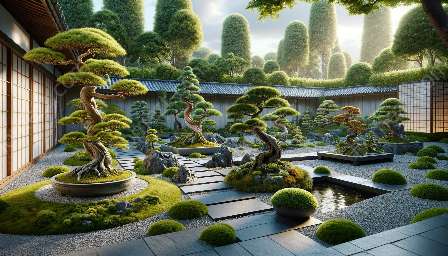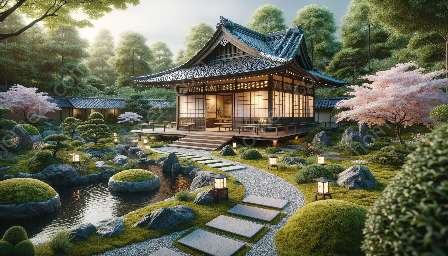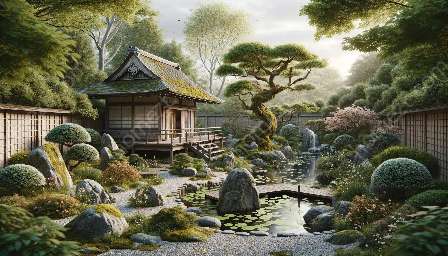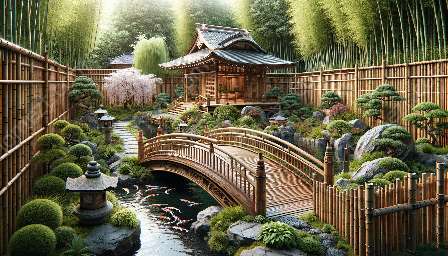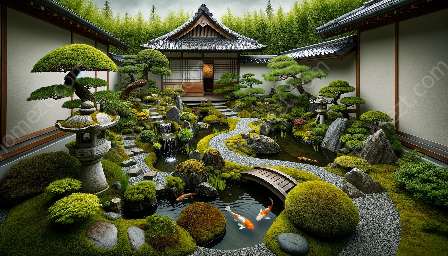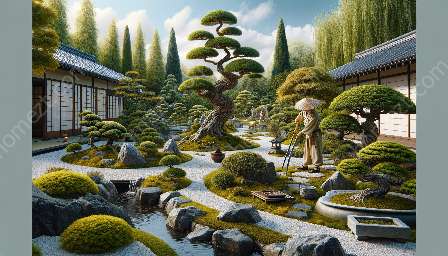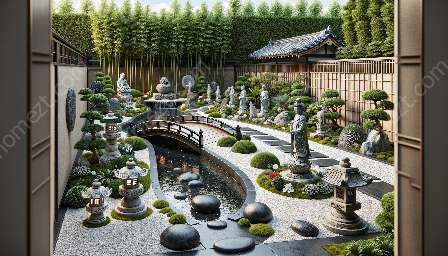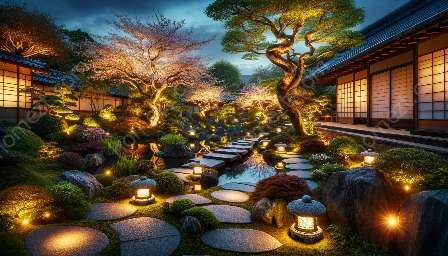Japanese gardens are renowned for their serene and tranquil beauty, drawing inspiration from nature and embodying the principles of harmony and balance. To understand the essence of a traditional Japanese garden, it's essential to delve into the distinct elements and design principles that make these gardens truly enchanting.
Elements of a Traditional Japanese Garden
1. Water Features
Water is a vital element in a Japanese garden, symbolizing serenity, purity, and life. Ponds, streams, and waterfalls are carefully integrated into the landscape, creating a sense of calm and tranquility. The gentle flow of water is often accompanied by carefully placed rocks and lush vegetation, enhancing the overall aesthetic.
2. Rocks and Stones
Rocks and stones hold deep symbolism in Japanese culture and are prominently featured in traditional garden designs. They are strategically placed to represent natural formations such as mountains, islands, or even animals, fostering a sense of harmony and balance within the garden.
3. Plants and Trees
The carefully selected plant species in a Japanese garden play a crucial role in creating a harmonious environment. A variety of trees, shrubs, moss, and flowers are meticulously arranged to reflect the changing seasons, evoking a profound connection to the natural world.
4. Lanterns and Ornaments
Delicate lanterns, sculptures, and other decorative ornaments are thoughtfully placed within the garden to accentuate its beauty and provide focal points. These traditional Japanese elements add a touch of elegance and cultural significance to the overall ambiance.
5. Bridges and Pathways
Graceful bridges and winding pathways are integral components of a Japanese garden, inviting visitors to explore and experience the space. These structures are designed to harmonize with the surrounding landscape, accentuating the natural beauty of the garden.
Japanese Garden Design Principles
1. Ma (Negative Space)
The concept of ma, or negative space, is fundamental to Japanese garden design. It emphasizes the use of open areas to create a sense of balance and simplicity, allowing the viewer to appreciate the surrounding elements more deeply.
2. Wabi-Sabi
Wabi-sabi embodies the beauty of imperfection and impermanence, a core principle in Japanese aesthetics. This concept is reflected in the garden through the use of weathered stones, moss-covered surfaces, and asymmetrical arrangements, celebrating the transient nature of life.
3. Asymmetry and Balance
Japanese gardens strive for asymmetrical balance, where elements are arranged in a way that feels natural and unforced. This deliberate imbalance creates a dynamic and visually engaging landscape, reminiscent of the organic beauty found in nature.
4. Borrowed Scenery (Shakkei)
Borrowed scenery integrates the surrounding natural landscape into the garden's design, blurring the boundaries between the man-made and the natural. Views of distant mountains, forests, or water bodies are strategically framed to enhance the garden's visual appeal and create a seamless connection with the environment.
5. Enclosure and Privacy
Japanese gardens often incorporate elements that provide a sense of enclosure and privacy, such as fences, hedges, or screens. These features create intimate spaces within the larger garden, fostering a meditative atmosphere and a feeling of seclusion.
The Connection between Japanese Gardens and Nature
The essence of a traditional Japanese garden lies in its deep-rooted connection with nature. Every element and design principle is meticulously crafted to honor the inherent beauty of the natural world, creating an immersive and contemplative experience for visitors. The seasonal changes, the sound of water, and the ever-evolving landscape all contribute to the profound relationship between the Japanese garden and the environment.
In conclusion, traditional Japanese gardens are masterpieces of harmony, balance, and cultural significance. By understanding the intricate elements and design principles that shape these gardens, we gain a deeper appreciation for their timeless beauty and their profound connection to nature.

